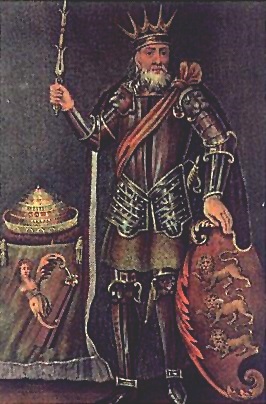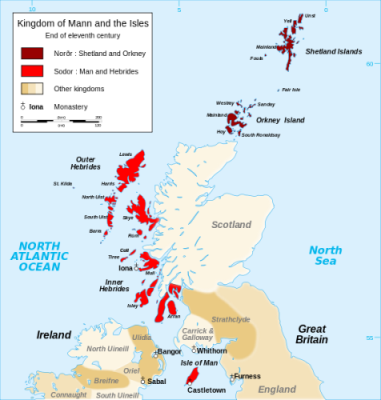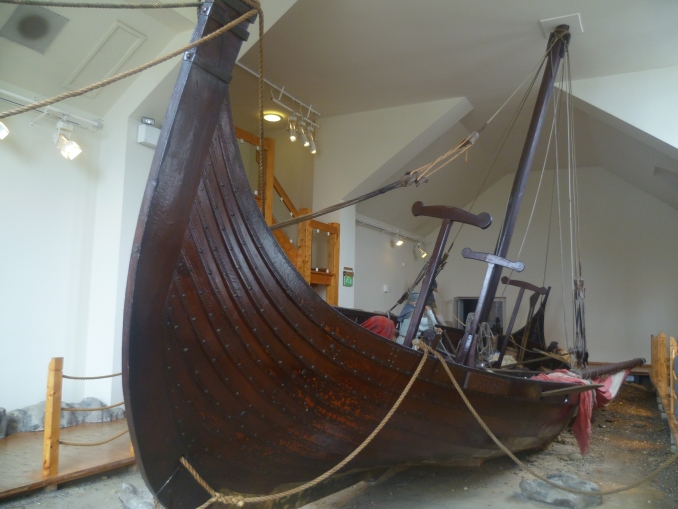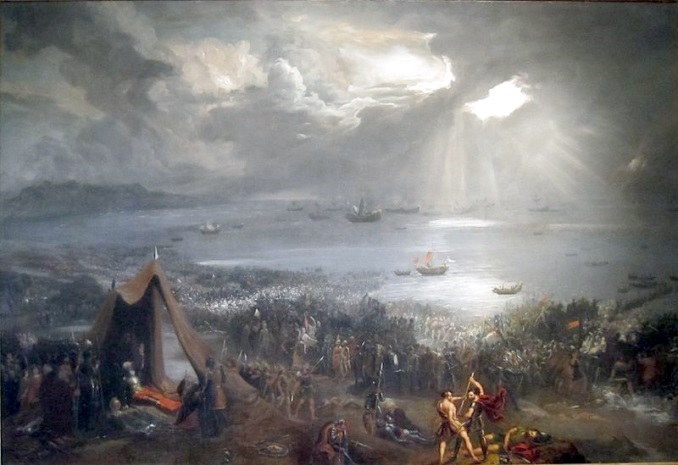Manx Vikings, the great Irish-Celtic High King Brian Boru and the Battle of Clontarf

Now recognised as a coastal suburb on the north side of Dublin, the area of Clontarf witnessed a fair amount of change as it became the subject of urbanisation during the nineteenth century, but arguably its greatest claim to fame is the seminal Battle of Clontarf in 1014.
A bloody and vicious affair, the millennium of this influential battle will be celebrated in style throughout 2014 at five Irish locations, with much of the celebrations within Clontarf and Dublin city centre. Events will examine many strands of Irish life at that time, with a special focus on the Battle of Clontarf Millennium Festival in April and the life of one of the main players in the battle, Brian Boru.
But many may not realise the strategic part played by Vikings from the Isle of Man in the battle, which was said to have claimed thousands of lives, or the singular link to the death of one of Ireland’s high kings.
Although he had ruled most of Ireland since 1002, the country was still fragmented and the title of ‘High King’ largely ceremonial, but Brian Boru looked to change this unsatisfactory situation and unite the island of Ireland.
This was invariably a long term project, but in 1012 the King of Leinster, Máel Mórda mac Murchada, rose in revolt, although Brian Boru moved swiftly to thwart this by arranging a series of ‘cross-marriages’; giving his daughter to Sigtrygg Silkbeard (leader of the Dublin Vikings) and marrying Sigtrygg’s mother, Gormflaith, who also happened to be the sister of the troublesome Máel Mórda mac Murchada, himself.
But the following year, Máel Mórda mac Murchada was admonished by his sister for accepting the rule of Brian Boru, and appealed to his nephew, Sigtrygg, for help. Sigtrygg Silkbeard was ready to fight and soon had the backing of a number of Irish clans who were envious of Brian Boru.
However, Brian Boru acted quickly to stem this uprising, imprisoned his wife, and immediately instigated a series of raiding parties around Dublin to quash any Irish who may decide to join the Viking forces. According to one of the Icelandic sagas, Gormflaith was, at the age of 50, endowed with great beauty but utterly wicked, and it would appear that after her divorce from Brian Boru she was a prime instigator of his downfall.

Gormflaith sent her son to win the support of Earl Sigurd Lodvesson of the Orkneys, before he headed to the Isle of Man to secure the help of two Viking siblings, Bródir and Óspak. Sigtrygg Silkbeard persuaded Bródir to arrive in Dublin by Palm Sunday, but little did the brothers know that he had spoken separately to each of them, suggesting that if they were successful in their quest they would be permitted to marry Gormflaith and become High King of Ireland. The terms of the agreement, however, were to be kept a secret. Óspak, it is said, was dissatisfied with this arrangement and refused to fight.
The description of Bródir, seen by the Irish as a Christian magician, conjures up a striking picture, with long hair tucked into his belt and wearing mailed armour that reportedly could not be pierced by steel.
An interesting story then comes to light from one of the Icelandic Sagas (Njál’s Saga) where it is recorded that one night a great noise awakened Bródir and his men whilst on the Isle of Man, causing them to awaken suddenly and dress themselves. This terrible noise went on till dawn and was accompanied by a shower of boiling blood, which left many of them scalded as a result. On a second night they awoke to a ‘ghostly assault’ on their ships by flying swords, axes and spears. On the third night they were subjected to an attack from ravens with iron beaks and claws and on each night a man died on every ship.
Bródir consulted his brother Óspak, who, somewhat intuitively, saw this as a sign that much blood would be shed on both sides and that Bródir’s men would die quickly during battle. His interpretation angered Bródir and he planned to slay his brother’s men the following day. However, Óspak anticipated his reaction and along with ten ships deserted his brother during the night to become an ally of Brian Boru.
According to Njal’s Saga, Bródir attempted to predict the outcome of the battle with sorcery, with unnerving accuracy.

Bródir’s Vikings anchored on the banks of Dublin Bay before commencement of the battle which raged all day, with Bródir and Óspak on opposing sides. Bródir brought with him 1,000 mail-clad Norsemen, which included a large number from the Isle of Man, to join a further 1,000 men who followed Sigurd, as they plunged into battle. Recalled as swinging his deadly axe with frightful effect, Bródir fought his way through the first ranks of his enemies, pushing back the Irishmen. That is until he met one of Brian Boru’s allies, Wolf the Quarrelsome, who penetrated Bródir’s mighty armour and forced the Manx based Viking to flee into a nearby wood. Despite the retreat of their leader, Bródir’s men were still a force to be reckoned with, but were subsequently attacked by Murchad, Brian Boru’s son, which ultimately broke them and they fled back to their ships. But to their horror they discovered that the tide had come in during the battle, preventing the Orkney and Manx Vikings from reaching the safety of their ships; their choice either a brutal death at the hands of their opponents, or possible drowning in their quest for sanctuary.
At this stage accounts begin to differ with regard to the fate of both Brian Boru and Bródir. Brian Boru was advised to await the outcome of the battle in his tent situated a little distance away from the bloodshed, with one story suggesting a traitor in the Irish camp pointed out Boru’s position in the woods to Bródir. Depending upon which account you read, Bródir managed to overcome Boru’s guard only to be killed by the High King before committing suicide. On the other hand, the Njal’s Saga reveals that Bródir successfully killed his opponent, decapitating him with one blow, before he and his men were captured by Wolf the Quarrelsome and slaughtered. Bródir was cut open at the belly and led around the trunk of a tree and so wound out all his entrails. Less dramatically it’s also thought that Bródir was simply killed in battle and that the celebrated Brian Boru was murdered in his tent by Norsemen who stumbled upon him accidently as they fled the scene. It may just depend upon who is telling the story.

The battle of Clontarf resulted in catastrophic loss on all sides and victors were few, but Sigtrygg Silkbeard and his mother, Gormflaith, who watched from a safe distance, survived this horrendous turmoil and lived on for many years, unlike so many who paid the ultimate price amongst the subterfuge and slaughter.
(With thanks to Rob Farrer and Allison Fox of Manx National Heritage)
Valerie Caine
© April 2014
(Courtesy of Manx Life)
- Pan-Celtic
- English
- Log in to post comments





